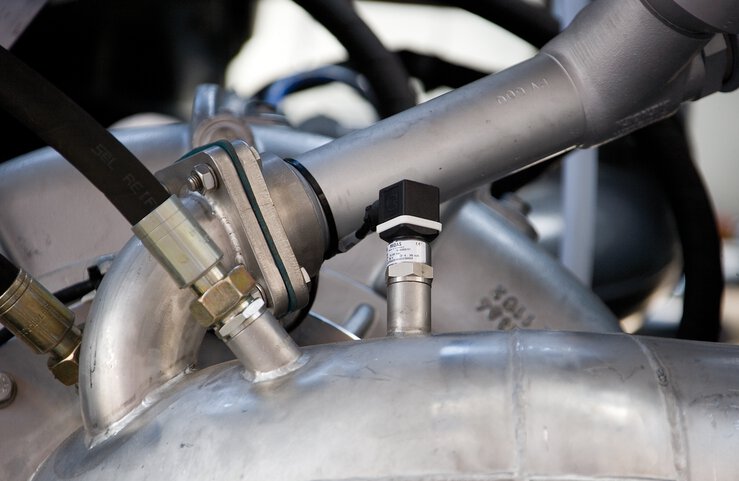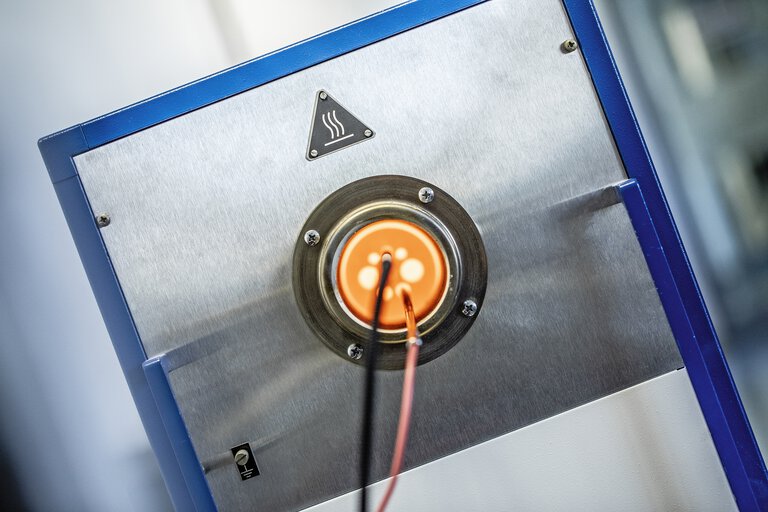

Temperature compensation in sensors
Changes in environmental conditions also affect sensors. Temperature usually has the greatest influence on the accuracy of pressure measurements. To minimise the influence of temperature on the measurement result, so-called temperature compensation is often used. To do this, the measurement deviation caused by temperature fluctuations is determined and the sensor is adjusted accordingly.
What is temperature compensation?
Temperature compensation – definition
Temperature compensation is the counteracting or correcting of unwanted temperature effects. This concept is very important in the manufacture of precision components and many electronic components and assemblies.
Active and passive temperature compensation
There are two forms of temperature compensation:
- Passive compensation: temperature dependent resistors are included in the Wheatstone bridge.
- Active compensation: different pressures are measured at increasing temperatures in the heating chamber. These values are then compared with the values from the calibration standard. The temperature coefficients determined on this basis are fed into the pressure transmitter electronics, so that temperature errors occurring in practice can now be compensated for "actively".
Active temperature compensation provides the most accurate results and is the method used most frequently.
Temperature compensation in pressure sensors
Digital pressure sensors use electronic circuits that provide an analogue output signal proportional to the input pressure. There are three factors in the sensor circuitry that are affected by changes in ambient temperature: the zero pressure output voltage, the pressure sensitivity range and the bridge resistance. Temperature-compensated sensors are equipped with certain correction techniques and minimise the influence of temperature changes on these factors.
Insert your Text here.
How to compensate a cold junction?
-
Cold connection at a known, constant temperature
You can use a small junction box with a temperature controller that keeps it always at a certain temperature. By knowing the temperature at which the cold junction is located, as well as the type of thermocouple, the temperature can be calculated and compensated.
-
Automatic on-line compensation in the measuring device
A measuring device (in the form of a transmitter, DCS input card or temperature calibrator) can measure the temperature of the cold junction all the time and automatically perform on-line compensation for this error. Since the measuring device also knows the thermocouple type, it can perform the compensation automatically and continuously. This is the easiest way to do it.
Compensation of temperature influence and resistance of connecting wires
A 3-wire connection is used to compensate for the temperature and resistance of the leads. As a precaution when using a 3-wire system, the lead wires should be of the same type, length and cross-section to compensate for the temperature effects of each lead wire.
Insert your Text here.
Strain gauge - temperature compensation
A strain gauge is used to measure strain. Compensation of the effect of temperature on a strain gauge is necessary in order to reduce the effect of temperature on measurement results. The main reasons for introducing thermal compensation in strain gauges are:
- thermal expansion of the measuring object
- thermal expansion of the sensing element in the strain gauge
- temperature coefficient of resistance of the wires connecting the strain gauge and the sensing elements
- ${title}${badge}



